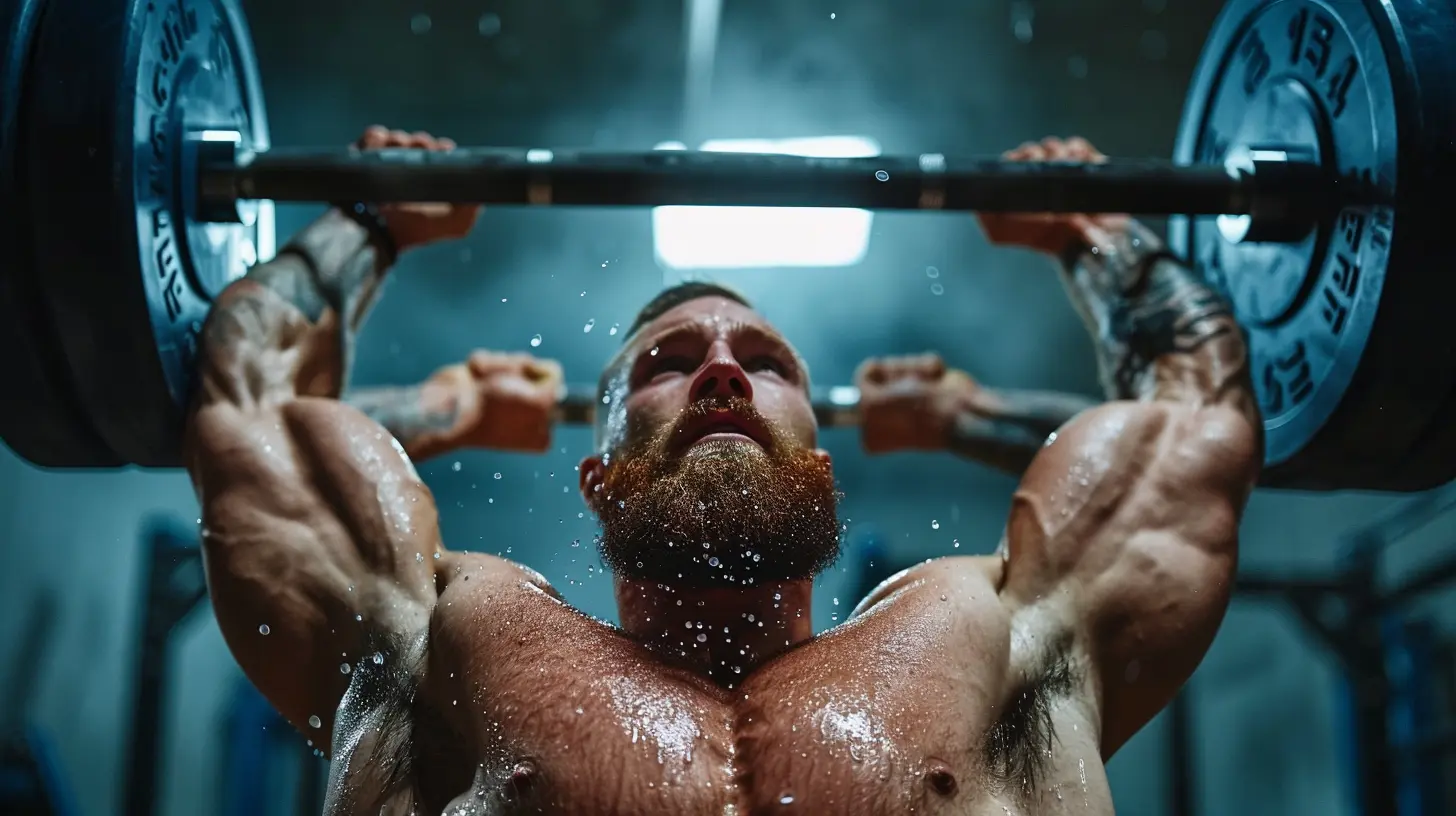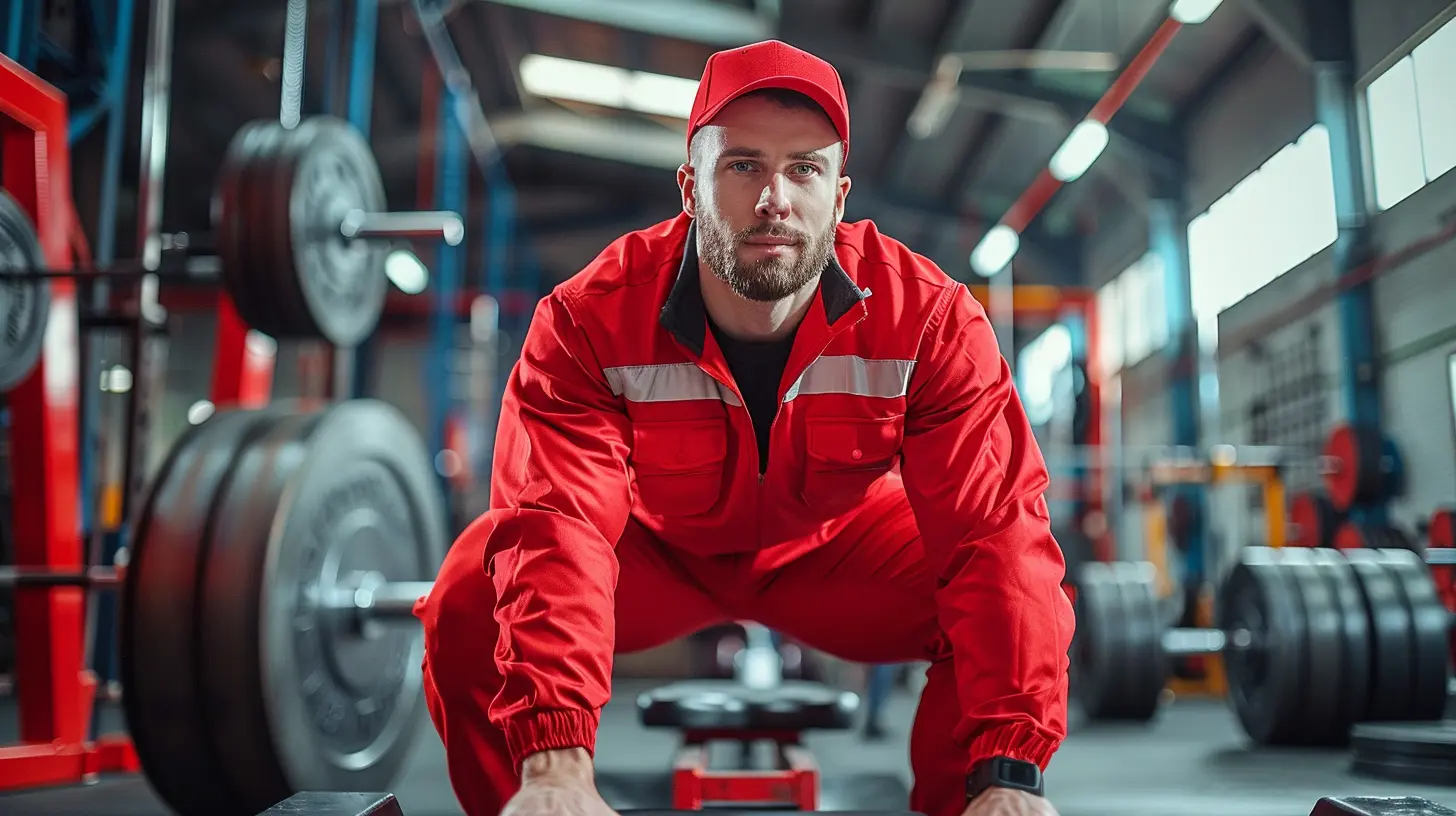The Importance of Proper Breathing Techniques During Lifts
3 July 2025
Let’s be honest—when was the last time you thought about your breathing while lifting weights? If you're like most gym-goers, probably never. You're more likely focused on your form, counting reps, or trying not to drop a barbell on your toe. But here's the deal: your breath might just be the hidden superpower you're ignoring.
Proper breathing techniques during lifts aren't just some woo-woo fitness trend—they're legit game-changers. Whether you're deadlifting a new PR, hitting heavy squats, or grinding through bench presses, how you breathe can make the difference between an epic set and a potential injury.
So let’s talk about why breathing matters just as much as the weight you're lifting. Gear up, because this is one of those topics that can level up your training instantly.
Why Breathing Matters More Than You Think
First things first, you’re not just lifting with your muscles—you’re lifting with your entire body. That includes your lungs, your diaphragm, your core, and yes, even your nervous system.When you get the breathing right, you're:
- Stabilizing your core
- Protecting your spine
- Increasing power
- Elevating endurance
- Reducing fatigue
- Enhancing focus
Sound impressive? It is. Proper breathing isn’t just a nice extra; it’s essential.
The Anatomy of a Good Breath
Let’s break it down. Breathing during lifts isn’t about short, shallow breaths from your chest. That’s how you breathe when you’re panicked—which is not the vibe we’re going for when you have a loaded barbell on your back.Instead, you want to practice diaphragmatic breathing—also known as belly breathing. That means pulling air deep into your lungs by expanding your diaphragm. You should feel your belly expand outward, not your chest rising up.
When you do this correctly:
- Your diaphragm contracts downward
- Your belly pushes out
- Your intra-abdominal pressure increases
- Your spine stays more stable
- Your lift becomes more efficient
Think of your core like a soda can—when it's sealed and pressurized, it's strong. Poke a hole in it (aka breathe wrong), and it crumples under pressure.
What Happens When You Breathe Wrong?
Let’s flip the coin. What happens when your breathing is all over the place?- Core instability = wobbly lifts
- Spinal misalignment = injury risk
- Energy leaks = lost strength
- Poor oxygen flow = faster fatigue
- Brain fog = loss of focus mid-lift
Not fun, right? It’s like trying to deadlift in flip-flops. The base is off, and it’s only a matter of time before something gives.
The Valsalva Maneuver: Your Power Tool
Okay, let's introduce the MVP of lifting breathwork: the Valsalva maneuver. Sounds super technical, but it’s actually simple.Here’s how it works:
1. Take a deep breath into your belly before the lift
2. Hold that breath while bracing your core (as if someone’s about to punch you)
3. Perform the lift
4. Exhale at the top or during the easier part of the movement
This technique increases intra-abdominal pressure, which supports your spine and lets your muscles fire with more power. It’s like wearing an internal weightlifting belt.
You might’ve seen powerlifters do this—big inhale, belly blows up, face turns red, lift goes up like it’s nothing.
But heads up: don’t hold your breath forever. That’s where people get dizzy or pass out. Always exhale strategically.
Breathing Techniques for Common Lifts
Now, let’s get practical. How should you actually breathe during the big lifts? Here’s the down and dirty guide.Squats
- Before the descent: Inhale deeply into your belly- Hold that breath (Valsalva) during the downward and upward motion
- Exhale at the top once standing again
This keeps your core braced through the most dangerous part—when your spine is under load.
Deadlifts
- Before pulling: Get set, inhale big, brace your core- Lift while holding that breath
- Exhale after lockout or once the bar is safely down
Think of your breath as the glue holding your spine and core together while you pull.
Bench Press
- Inhale before lowering the bar- Hold your breath during the press
- Exhale at the top
Controlled breathing keeps your ribcage stable, which is key for power and shoulder safety.
Overhead Press
- Take a breath before pressing- Hold during the press
- Exhale at the top safely
With weight overhead, stability is everything. Don’t let shaky breathing throw you off balance.
When to Use Controlled Breathing vs. Rhythmic Breathing
Not every lift requires breath-holding. For higher-rep sets or isolation exercises (like bicep curls or lateral raises), you’ll want more rhythmic breathing.Here’s the rhythm:
- Inhale on the eccentric (lowering)
- Exhale on the concentric (lifting)
This keeps your oxygen flowing and helps you maintain tempo. Less about pressure, more about endurance.
Save the big breath holds for compound lifts and maximal loads. For everything else, keep it smooth and steady.
Common Breathing Mistakes to Avoid
Let’s shine a light on the usual suspects that mess with your performance:1. Chest Breathing
Shallow and weak. This barely fuels your body and does nothing for core stability.2. Waiting Too Long to Breathe
Holding your breath too long = Dizziness City. Time it right.3. Breathing During the Lift (If Heavy)
Exhaling mid-squat? Mid-deadlift? That’s like taking your foot off the gas at the worst moment. Maintain pressure.4. Overthinking It
Don’t get paralyzed trying to make every breath perfect. Practice makes it second nature.How to Practice Proper Breathing (Without Heavy Weights)
You don’t need to be under a barbell to work on this stuff. In fact, it’s better to dial it in before you go heavy.Try these drills:
Belly Breathing Drill (Lying Down)
1. Lie on your back, knees bent2. Place one hand on your chest, one on your belly
3. Inhale through your nose—focus on the belly hand rising
4. Chest hand should stay still
5. Exhale slowly through your mouth
Do this for 5 minutes a day to reprogram your breathing mechanics.
Bracing Drill
1. Stand tall, hands on your sides and stomach2. Inhale deeply into your belly
3. Tighten your core like someone’s punching you
4. Practice bracing with and without movement (e.g., bodyweight squats)
Build that mind-muscle connection with your breath.
Using Breathing to Boost Mental Focus
Breathing isn’t just physical—it’s mental, too.When you control your breath, you calm your nervous system. That helps you:
- Stay focused under pressure
- Reduce anxiety before a big lift
- Transition between intense sets
- Recover quicker post-lift
It’s basically a mental reset button. Before you psych yourself out on a big squat, take a deep breath—literally—and refocus.
Final Tips You Can Actually Use Today
- Don’t just breathe—breathe with purpose- Practice belly breathing during warm-ups
- Use the Valsalva maneuver for heavy lifts
- Avoid exhaling mid-rep when going heavy
- Use rhythmic breathing for light/moderate sets
- Train your breath like you train your body
Got a lifting plateau? Fix your breath first. You might be surprised how much strength you’ve been leaving on the table.
Conclusion: Breathe Better, Lift Stronger
Breathing seems so simple that we hardly give it any thought. But in the weight room, it’s one of the most overlooked tools for performance and safety. From stabilizing your core to increasing your mental sharpness, breathing the right way is like cheating the system—but legally.So next time you're about to squat, deadlift, or press, don’t just grip it and rip it. Breathe like a boss, and let your breath unlock strength you never knew you had.
Your muscles will thank you. Your spine will thank you. And honestly, you’ll feel like a whole new lifter.
all images in this post were generated using AI tools
Category:
Gym TrainingAuthor:

Preston Wilkins
Discussion
rate this article
1 comments
Corinne Jones
Breathe like a dragon, lift like a mythical beast – unleash your inner weightlifting wizard!
July 14, 2025 at 2:40 AM

Preston Wilkins
Thank you! Emphasizing proper breathing can indeed elevate our lifting experience and performance, allowing us to channel that inner strength effectively.


